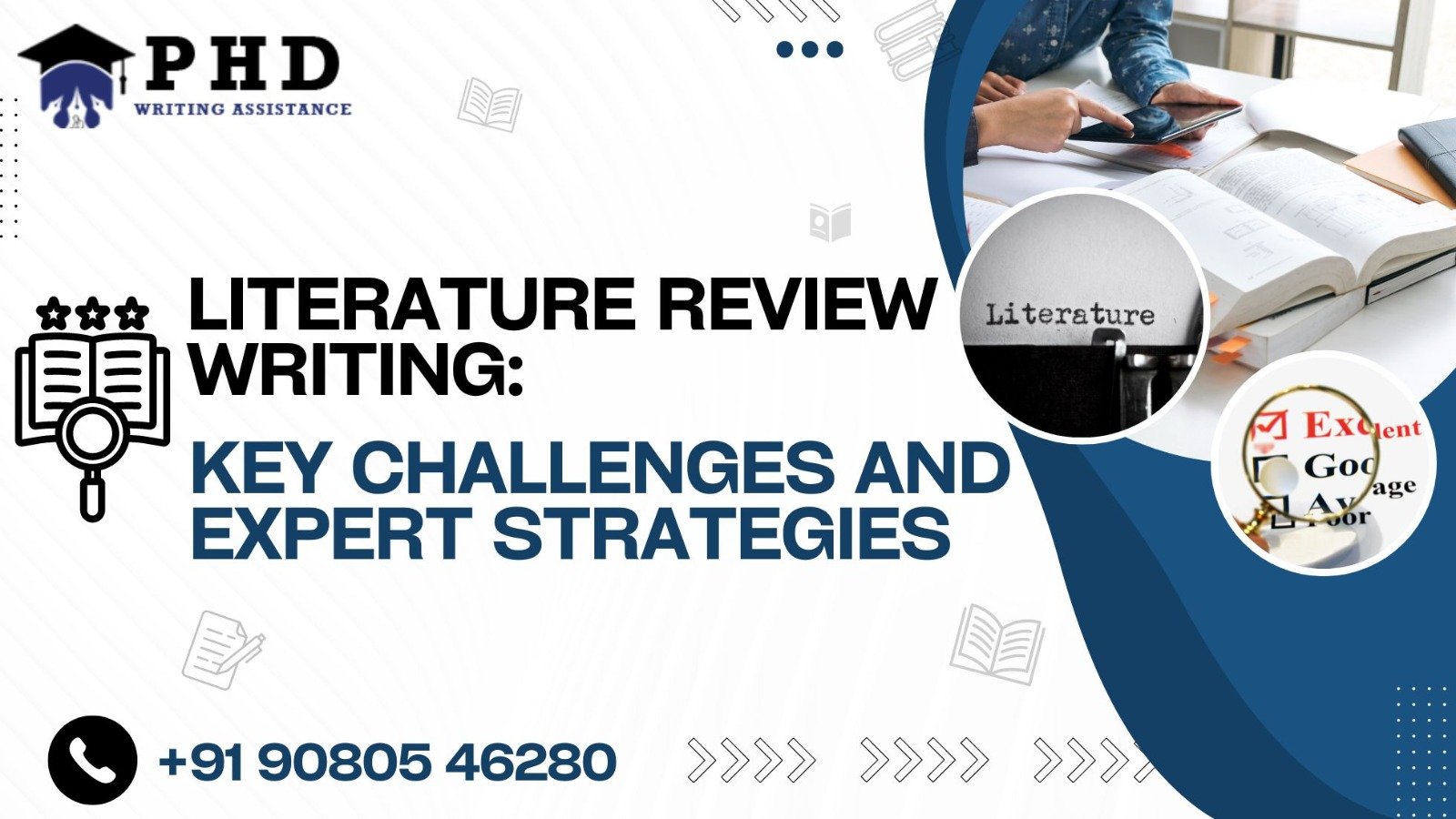
Literature Review Writing: Key Challenges and Expert Strategies
- by phdblog
Introduction:
A literature review is defined as a comprehensive and critical analysis of existing research relevant to the topic being studied, often forming a fundamental part of a broader research thesis or paper. Its value lies in enabling the researcher to uncover gaps in the literature, examine conflicting viewpoints, and identify emerging trends. Moreover, the process aids in refining the research question and aligning the methodology accordingly. However, while the importance of a literature review is widely recognized, executing it effectively is no simple task.
Writing a thorough literature review can be quite challenging. One of the primary difficulties lies in locating and selecting relevant sources. Beyond that, organizing these sources in a meaningful way, synthesizing the information, maintaining coherence throughout the review, and adhering to an appropriate writing style can present additional hurdles. This article will explore some of the most common challenges associated with literature reviews and provide strategies to help overcome these obstacles effectively.
Commonly Encountered Challenges:
Finding the Right Sources:
The first step in conducting a literature review is identifying and selecting the appropriate sources—those that are relevant, credible, and valuable to the research. Many scholars begin with a broad, generic search, while more experienced researchers leverage academic databases to locate scholarly articles. Regardless of the approach, it’s essential to critically assess each source for its authority, quality, and relevance. Key considerations include the publication date, the author’s credentials, the scope and depth of the content, the strength of arguments presented, and the robustness of references cited (Mitchell & Rich, 2022).
Additionally, tools like citation analysis, peer review, and the journal’s impact factor can be employed to gauge the source’s significance and relevance to the topic at hand.
Organizing the Sources:
Once the relevant sources have been gathered, the next challenge is organizing them in a manner that facilitates comparison and contrast of key elements, such as research methods, findings, and implications. Effective organization can be achieved using various approaches, including chronological, thematic, methodological, or theoretical frameworks (Pagliarussi, 2020). Scholars can also use visual tools like matrices, tables, charts, or concept maps to categorize and display their sources clearly. The goal is to group sources around common themes, gaps, or patterns that emerge during analysis and link these findings back to the research questions and objectives. This structured organization not only improves clarity but also strengthens the overall narrative of the literature review.
Synthesizing the Sources:
Synthesizing sources goes beyond simply summarizing or paraphrasing individual studies; it involves weaving together insights from various pieces of literature into a cohesive narrative. The goal is to show how these sources relate to one another and to your own research argument or perspective. Effective synthesis requires identifying similarities and differences, comparing and contrasting key findings, drawing connections, and arriving at conclusions or highlighting the implications of the studies (Brendel et al., 2020). This process enables a comprehensive understanding of the literature landscape and its relevance to your work.
Additionally, to guide readers through your synthesis, it’s important to use appropriate connectors, transitions, and signposts. These linguistic tools help to clarify how your ideas evolve and whether they support or challenge existing literature.
Maintaining Coherence:
Given the scope and depth of most literature reviews, maintaining coherence is often a significant challenge. Without a clear structure, your review can become fragmented, making it difficult for readers to follow the argument. To ensure coherence, it is advisable to create a detailed outline before beginning the writing process. This outline should break down the literature into sections and subsections based on thematic groupings.
Each section should be introduced clearly, discussed thoroughly, and concluded with a summary of key points. The transition between sections should be smooth, and connections between ideas should be highlighted to maintain logical flow. By following these steps, you can present a well-structured literature review that is easy to navigate and understand.
Writing Style:
Striking the right balance between a formal and engaging writing style is another common challenge in literature review writing. While academic writing demands clarity and precision, it is equally important to maintain the reader’s interest throughout. To achieve this, consider your target audience and the purpose of your literature review (V, 2023). Use simple, straightforward language and avoid overloading your writing with technical jargon, which can alienate readers. Employ rhetorical questions and transitional phrases to add variety and keep your audience engaged. Additionally, simplifying complex ideas and providing relevant examples can enhance understanding and make your arguments more persuasive and accessible.
Conclusion:
As discussed, writing a literature review can be a challenging and time-consuming process, requiring significant focus, dedication, and perseverance. Since it often constitutes a major portion of a research project, it’s easy for scholars to lose direction. However, with the right approach and by keeping these key strategies in mind, conducting an effective literature review is certainly achievable.
For those seeking additional support, PhD Writing Assistance offers comprehensive literature review writing services, along with a wide range of related services. With over a decade of experience, PhD Writing Assistance has been a trusted partner for scholars, researchers, and students. Their team of highly qualified experts, proficient across various fields, is skilled in producing well-crafted literature reviews and other research-related projects.
Introduction: A literature review is defined as a comprehensive and critical analysis of existing research relevant to the topic being studied, often forming a fundamental part of a broader research thesis or paper. Its value lies in enabling the researcher to uncover gaps in the literature, examine conflicting viewpoints, and identify emerging trends. Moreover, the…
